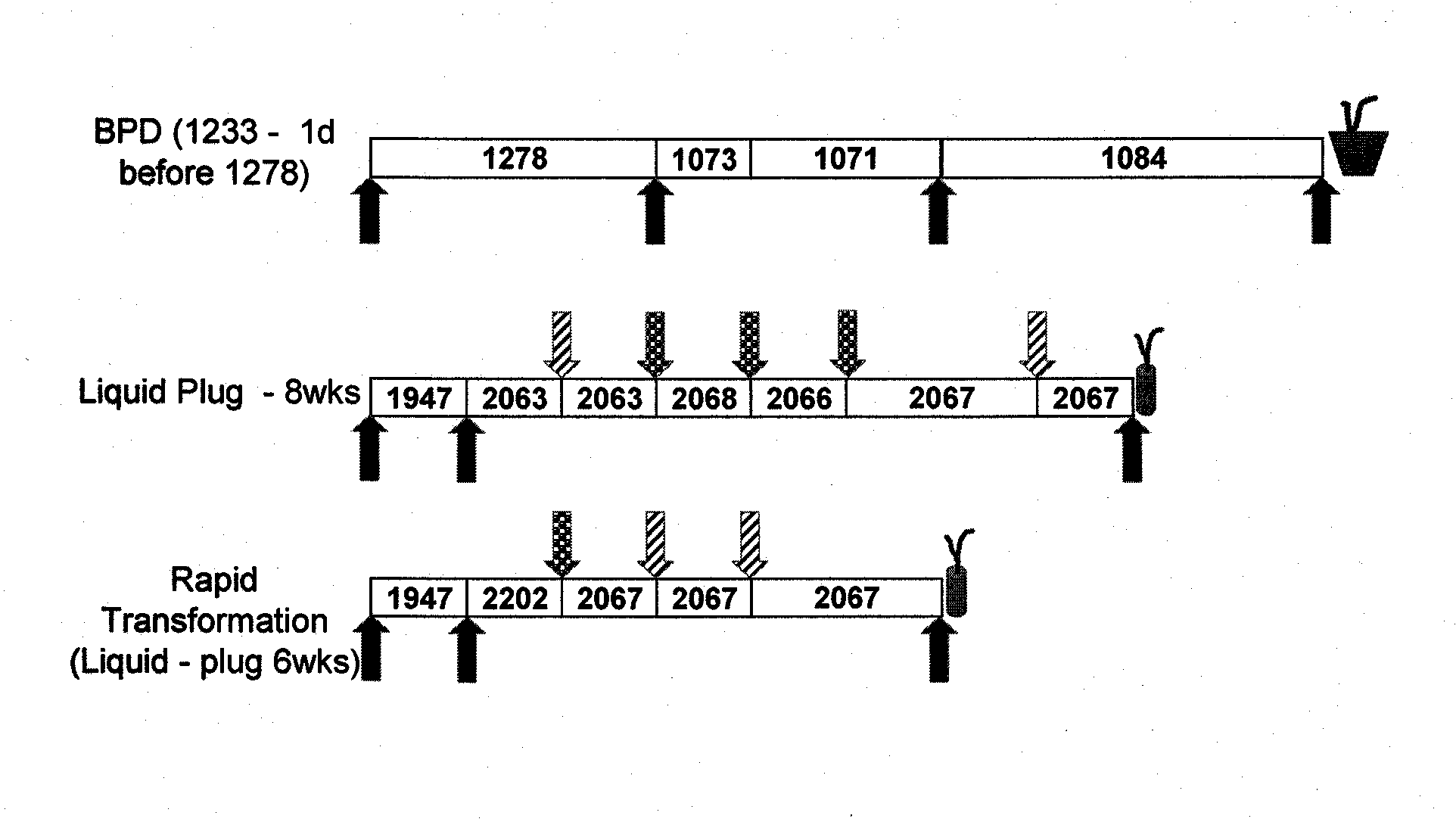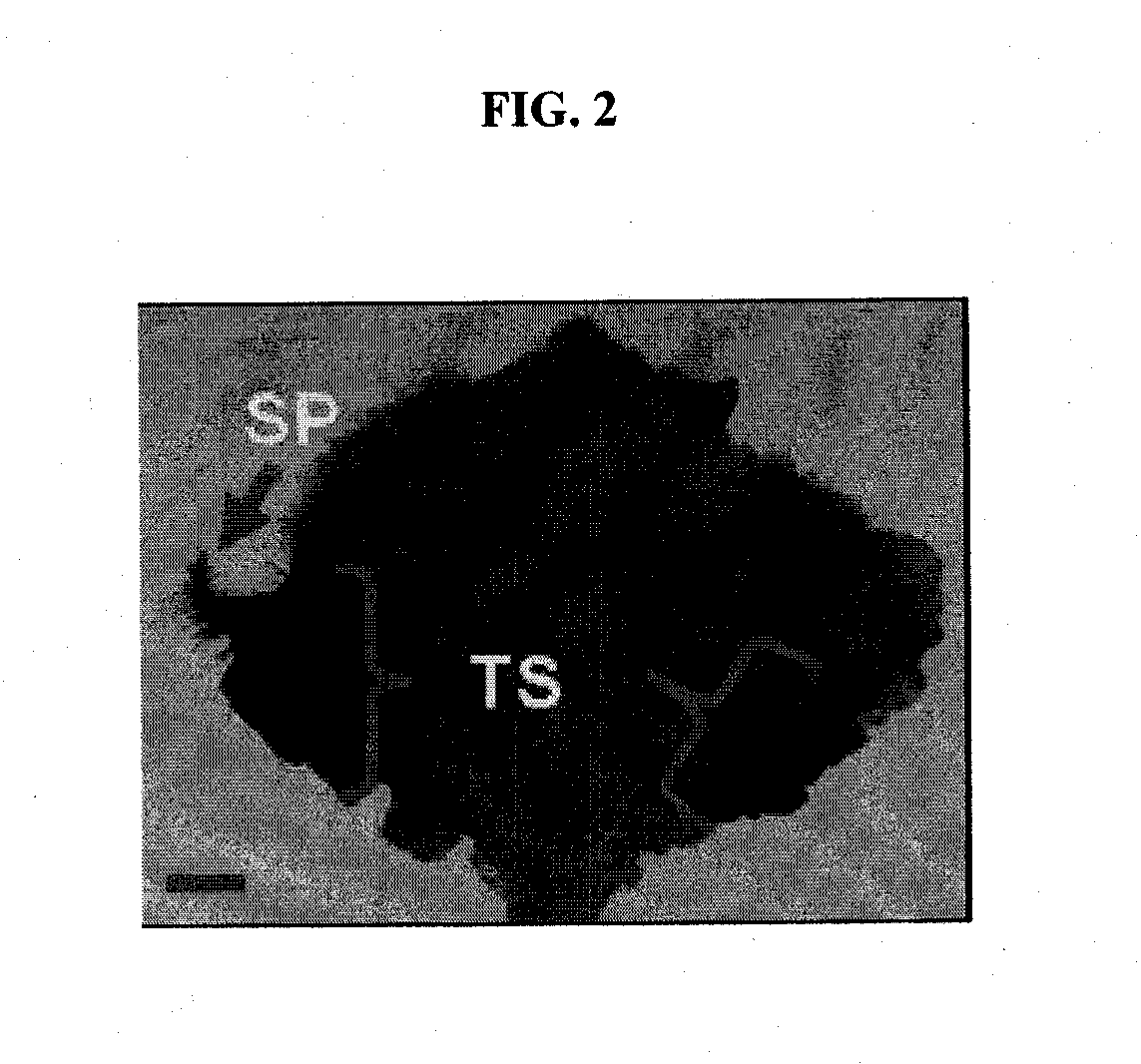Methods for rapidly transforming monocots
a monocot and rapid technology, applied in the field of plant biotechnology, can solve the problems of limiting the genotype of crops such as corn that can be transformed, time-consuming and inefficient use of standard transformation and regeneration protocols, and negatively affecting the transgenic product development timelin
- Summary
- Abstract
- Description
- Claims
- Application Information
AI Technical Summary
Benefits of technology
Problems solved by technology
Method used
Image
Examples
example 1
Nucleic Acid Constructs and Transformation Agents
[0055]This example describes the making of the DNA constructs and transformation of the DNA constructs into ABI Agrobacterium strain (a disarmed C58 strain) used for transformation of corn immature embryos. The plasmid pMON 97367 contains a cp4 gene as the selectable marker and a gus gene as the screenable marker driven by the chimeric rice actin and rice actin promoter, respectively. Strains of Agrobacterium were prepared for transformation essentially according to procedures described elsewhere, such as Cai et al. (U.S. Patent Applic. Publn. 2004 / 00244075).
example 2
Improving Throughput of Transformation
[0056]This example describes the development of a revised method using liquid media during callus proliferation, selection, and during regeneration steps in order to develop a simplified high throughput method needing less tissue handing and which is automatable. FIG. 1 shows an experimental design for this 8 week liquid culture protocol (“Liquid Plug”—FIG. 1, middle diagram). Table 4 shows the results when compared with the method, essentially, of Cai et al (U.S. 2004 / 0244075, i.e. FIG. 1, top diagram). The revised method is also modified from that found in Example 3, in that explants were transferred to a fourth medium (Lynx 2063) after the first medium for one to two weeks at 30° C. in dark, transferred to a modified 2 medium (e.g. 2068; i.e. 2202 with added AgNO3), and then transferred to a fifth medium (e.g. Lynx 2066) after the second medium for one week at 27° C. in dark.
[0057]As noted above, certain corn transformation methods are descri...
example 3
Transformation Method
[0058]This example describes a transformation method, including regeneration steps (FIG. 1, “Rapid Transformation” scheme, bottom diagram), by which is obtained, after about as little as 6 weeks of growth, a regenerated plant in a solid growth medium (e.g. growth plug). In general, immature embryos (IEs) were excised manually or via a fluid jet apparatus such as disclosed in U.S. Pat. No. 7,150,993, or US Patent Application Publn. No. 2005 / 0246786, and inoculated with the Agrobacterium cells containing the DNA construct of interest. The inoculated embryos were cultured on the first medium (Lynx 1947) for about 7 (optionally to about 14) days at 23° C. for 1 day and at 30° C. for the rest of the time in dark, after which explants were transferred to a Petri plate containing a support such as felt and / or filter paper (e.g. Ahlstrom grade 610, 8.22 cm; Ahlstrom Corp., Helsinki, Finland) and 10 ml of a second medium (Lynx 2202), and the plates were incubated at 30° ...
PUM
| Property | Measurement | Unit |
|---|---|---|
| time | aaaaa | aaaaa |
| time | aaaaa | aaaaa |
| size | aaaaa | aaaaa |
Abstract
Description
Claims
Application Information
 Login to View More
Login to View More - R&D
- Intellectual Property
- Life Sciences
- Materials
- Tech Scout
- Unparalleled Data Quality
- Higher Quality Content
- 60% Fewer Hallucinations
Browse by: Latest US Patents, China's latest patents, Technical Efficacy Thesaurus, Application Domain, Technology Topic, Popular Technical Reports.
© 2025 PatSnap. All rights reserved.Legal|Privacy policy|Modern Slavery Act Transparency Statement|Sitemap|About US| Contact US: help@patsnap.com



